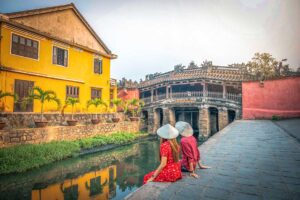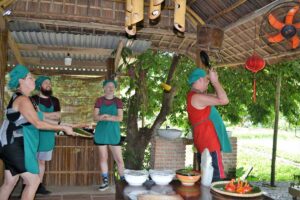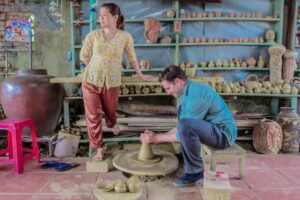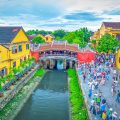Hoi An Tours
Hoi An tours take you through the lantern-lit Ancient Town, to the Cham Islands for snorkeling, or to My Son Sanctuary for temple ruins. You can also explore the Marble Mountains or join a cycling or cooking tour in the peaceful countryside.
View tours >>
The Best Hoi An Tours & Local Experiences
Not sure what Hoi An tour to choose?
About Hoi An
Frequently Asked Questions About Sapa tours
When is the best time to visit Hoi An?
The best time to visit Hoi An is from February to May, when the weather is warm, dry, and less humid. June to August is hotter but still good for beach and island trips. From September to January, expect more rain and occasional flooding, especially in the Old Town area.
What are the best day trips from Hoi An?
Top day trips from Hoi An include My Son Sanctuary for temple ruins, Cham Island for snorkeling and beaches, and Marble Mountains & Son Tra Peninsula for caves and coastal views. Each offers something different and is reachable within a few hours by car or tour.
What are the best countryside tours in Hoi An?
Hoi An’s countryside is great for slow travel. Cycling tours take you through rice paddies and local villages. Basket boat rides in Cam Thanh Coconut Village offer a fun way to see the water palm forest. Cooking classes often include a local market visit and a hands-on meal.
What are the most active tours in Hoi An?
If you’re looking for more activity, go for a cycling tour, kayaking along the Thu Bon River, or try stand-up paddleboarding at sunrise or sunset. These tours combine scenery, light exercise, and a chance to see local life away from the main tourist spots.
Is Hoi An still worth visiting during the rainy season?
Yes, Hoi An can still be enjoyable in the rainy season (September–January), though some boat tours may be canceled due to weather. The Ancient Town remains atmospheric and less crowded, and cooking classes, tailors, and spa visits are great indoor options.
How many days should I spend in Hoi An?
You’ll need at least 2 to 3 full days to explore the Ancient Town, take a countryside or food tour, and relax at the beach. If you plan to do multiple day trips or join workshops, staying 4 to 5 days offers a more complete and relaxed experience.
Who operates the tours in Hoi An?
Why book Hoi An tours with Local Vietnam?
10 Highlights in Hoi An Tours

1. Walking the Ancient Town

2. Cycling the Countryside

3. Cooking Vietnamese Food

4. Relaxing on the Beach

5. Boating the Thu Bon River

6. Tailor-Made Clothing

7. Visiting Local Markets

8. Exploring Craft Villages

9. Scenic Ride to Hue

10. Day Trips from Hoi An
Why Choose Local Vietnam for Your Hoi An Tours
Local, authentic, and personal experiences designed to show you the real Hoi An.
Local Vietnam is based in Vietnam and works closely with craft villages, boat operators, and local guides around Hoi An to create authentic experiences. Our private tours combine the old town’s heritage with cycling, cooking classes, and village visits in the surrounding countryside.With our local connections and carefully chosen partners, we design Hoi An tours that go beyond sightseeing to show daily life and craft traditions.







